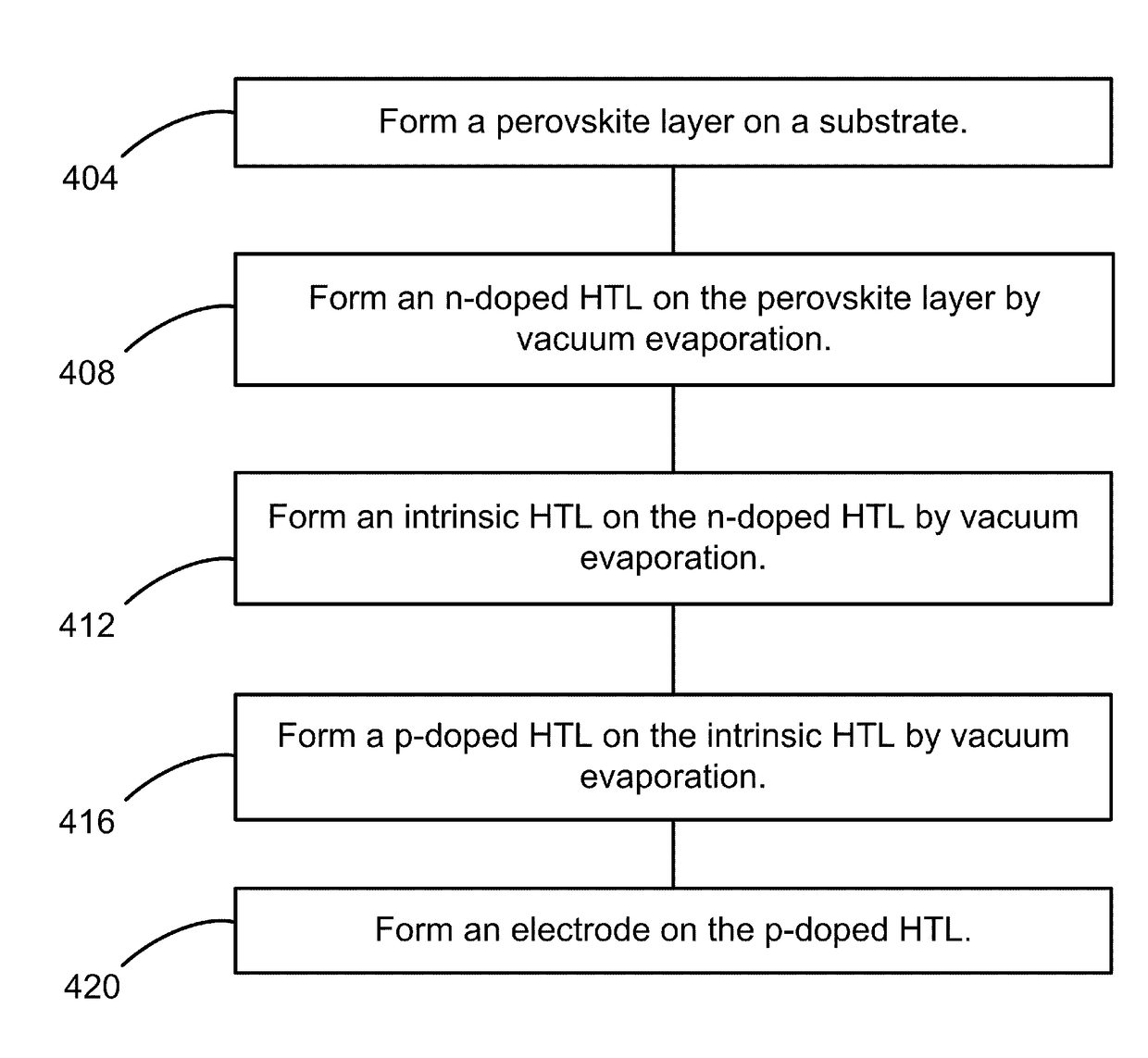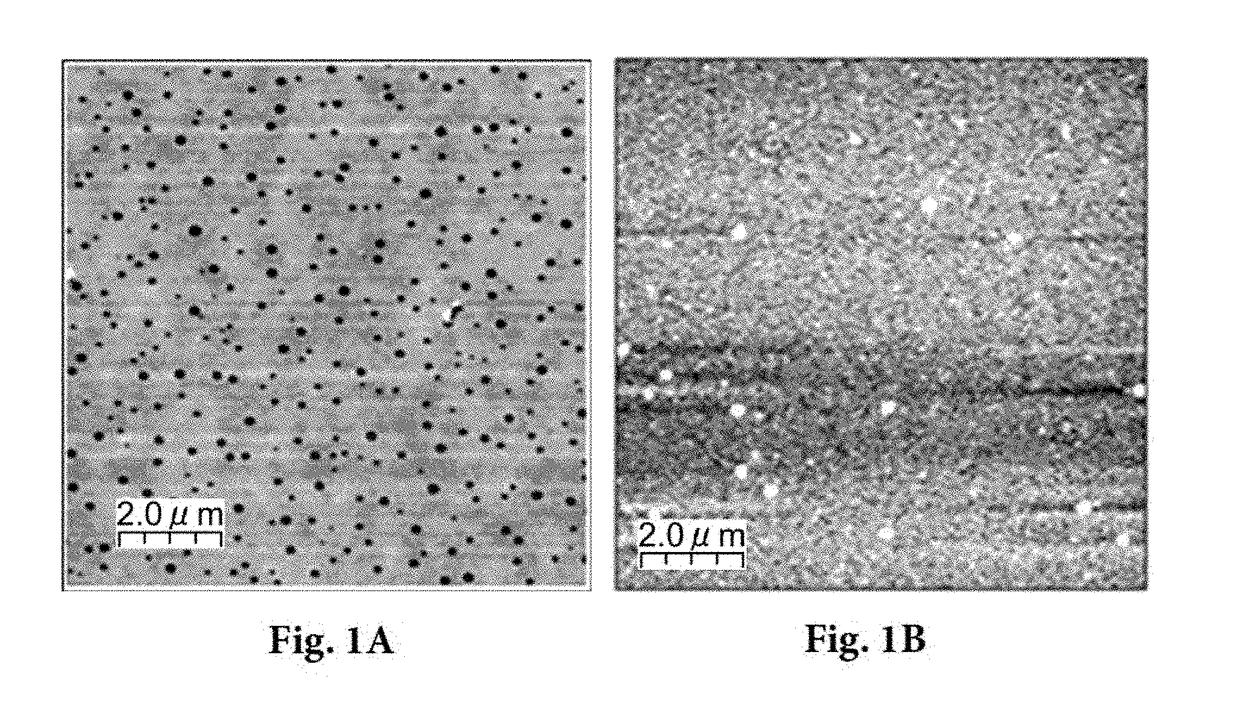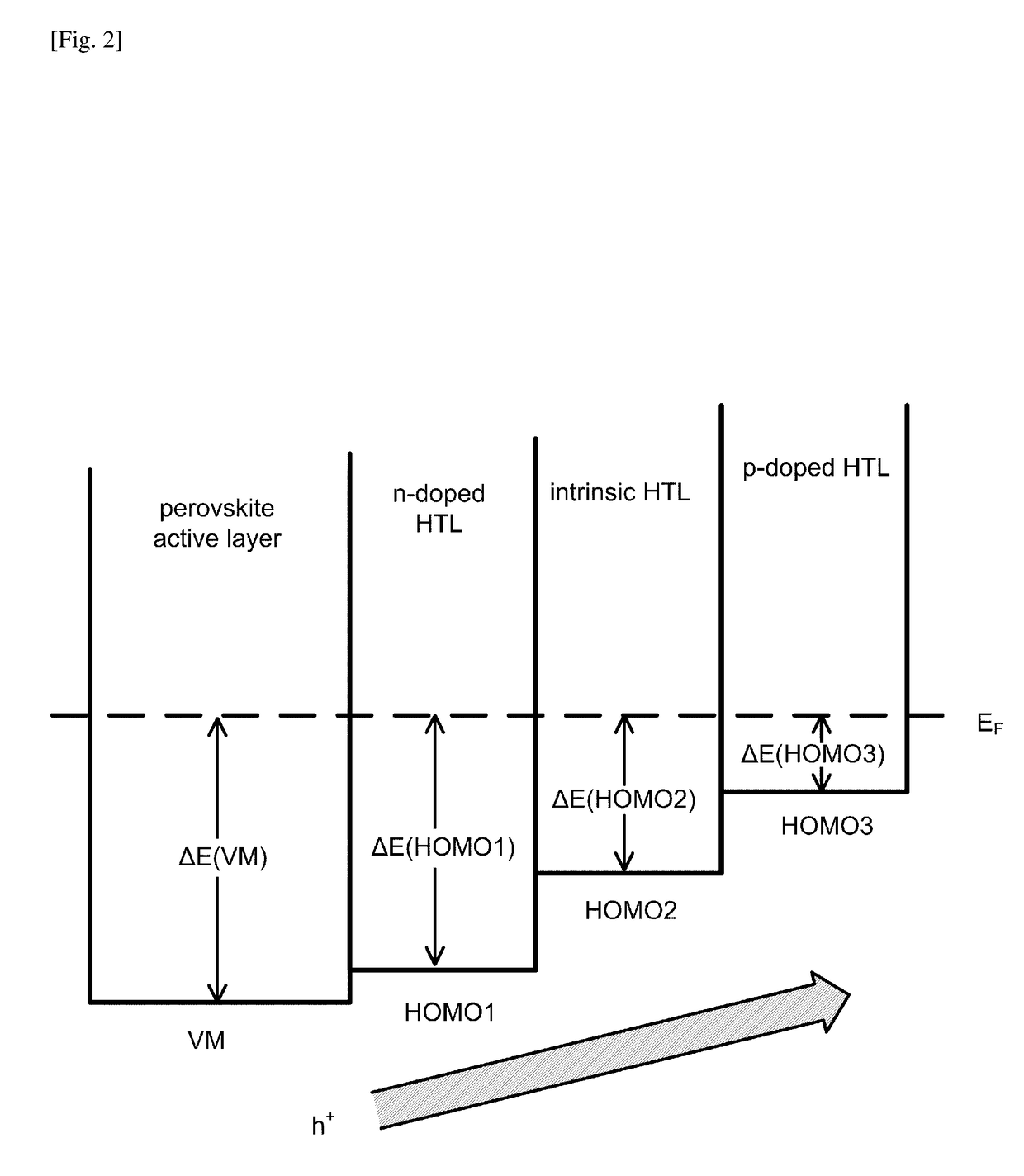Doping engineered hole transport layer for perovskite-based device
a technology of perovskite and transport layer, which is applied in the direction of solid-state devices, basic electric elements, final product manufacturing, etc., can solve the problems of insufficient robustness of existing techniques for fabricating perovskite-based devices with doping engineered layers, and the difficulty of obtaining stable perovskite-based devices using existing fabrication techniques
- Summary
- Abstract
- Description
- Claims
- Application Information
AI Technical Summary
Benefits of technology
Problems solved by technology
Method used
Image
Examples
Embodiment Construction
[0038]Source materials for fabricating an organometal halide perovskite film include halide materials such as PbCl2, PbBr2, Pb2, SnCl2, SnBr2, SnI2 and the like, and methy-lammonium (MA=CH3NH3+) compounds such as CH3NH3Cl, CH3NH3Br, CH3NH3I, and the like. In place of, or in a combination with the MA compound, a formamidinium (FA=HC(NH2)2+) compound can also be used. Organometal halide perovskites have the orthorhombic structure generally expressed as ABX3, in which an organic element, MA or FA, occupies each site A; a metal element, Pb2+ or Sn2+, occupies each site B; and a halogen element, Cl−, I− or Br−, occupies each site X. In this document, AX represents an organic halide compound having an organic element MA or FA for the A-cation combined with a halogen element Cl, I or Br for the X-anion; BX2 represents a metal halide compound having a metal element Pb or Sn for the B-cation combined with a halogen element Cl, I or Br for the X-anion. Here, the actual element X in the AX and...
PUM
 Login to View More
Login to View More Abstract
Description
Claims
Application Information
 Login to View More
Login to View More - R&D
- Intellectual Property
- Life Sciences
- Materials
- Tech Scout
- Unparalleled Data Quality
- Higher Quality Content
- 60% Fewer Hallucinations
Browse by: Latest US Patents, China's latest patents, Technical Efficacy Thesaurus, Application Domain, Technology Topic, Popular Technical Reports.
© 2025 PatSnap. All rights reserved.Legal|Privacy policy|Modern Slavery Act Transparency Statement|Sitemap|About US| Contact US: help@patsnap.com



